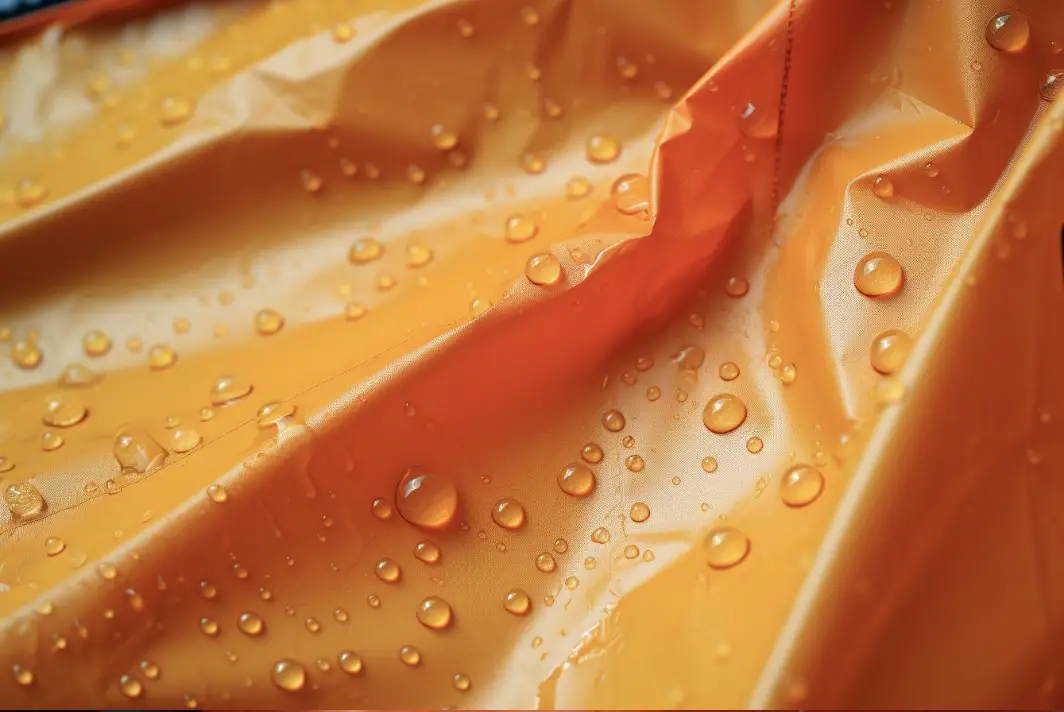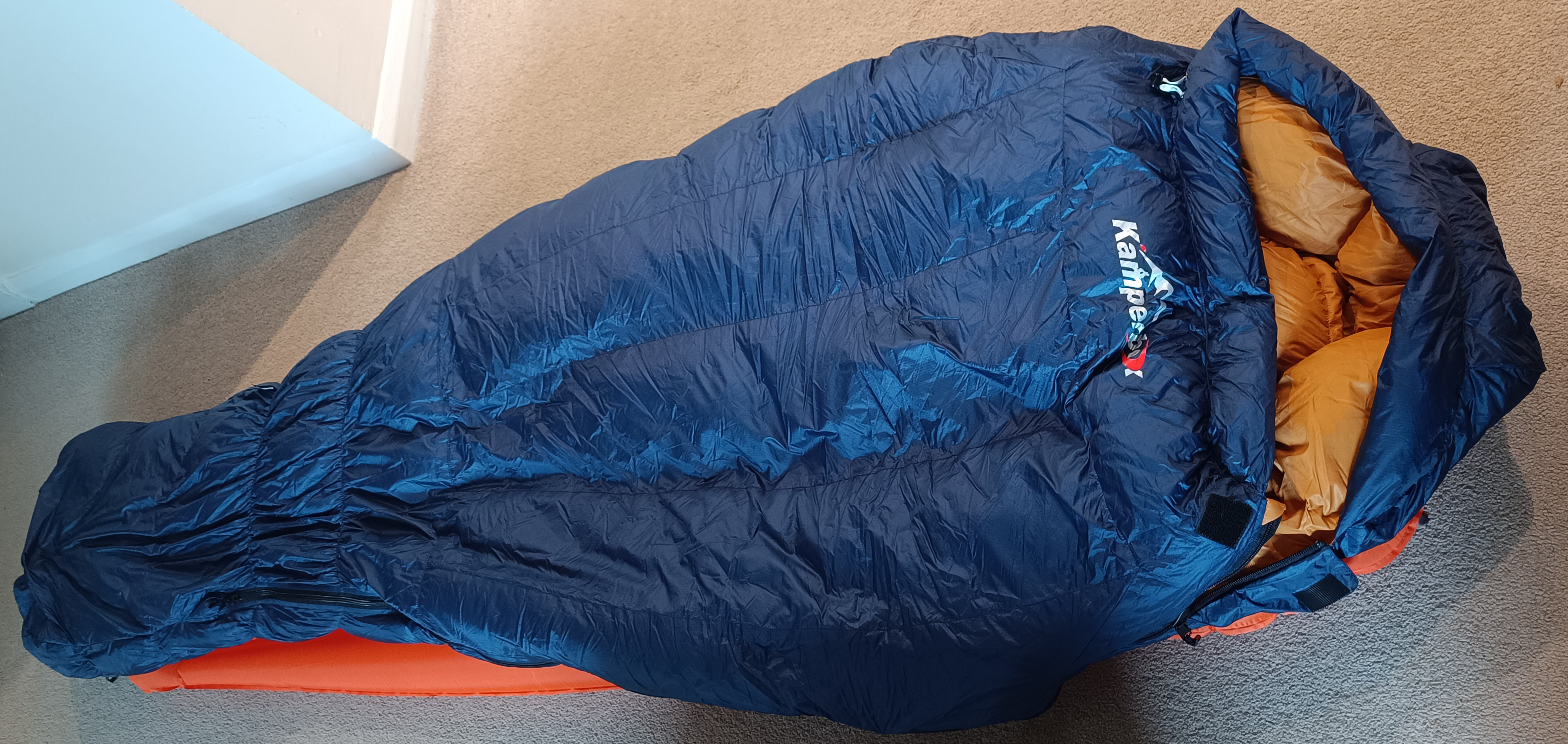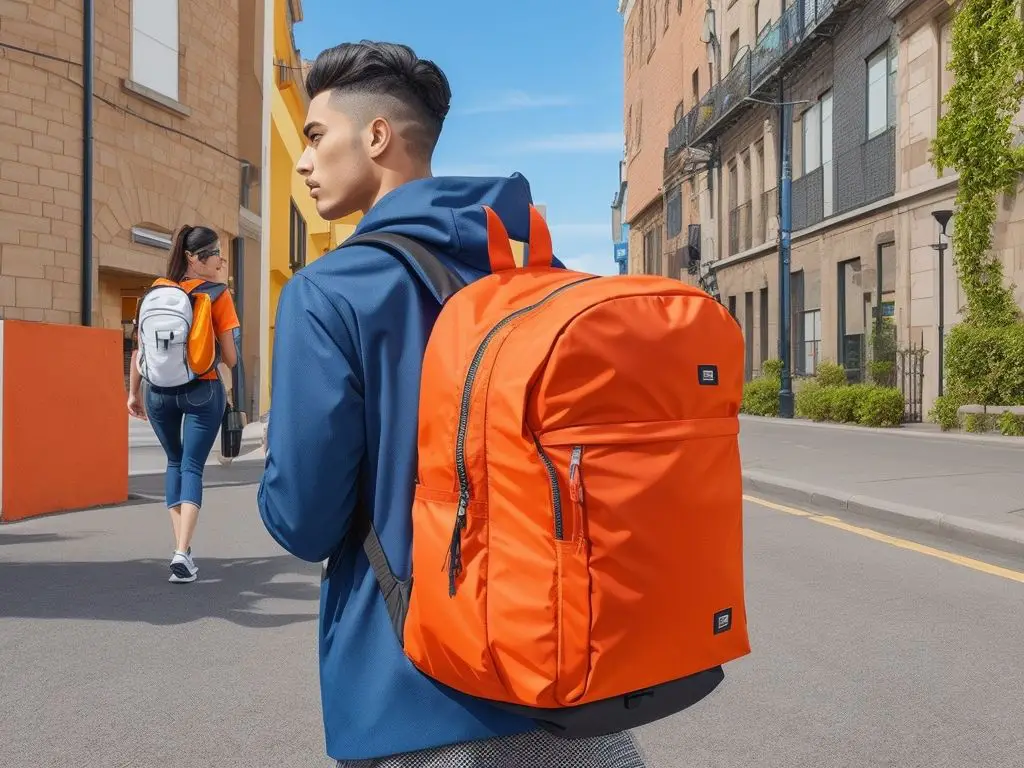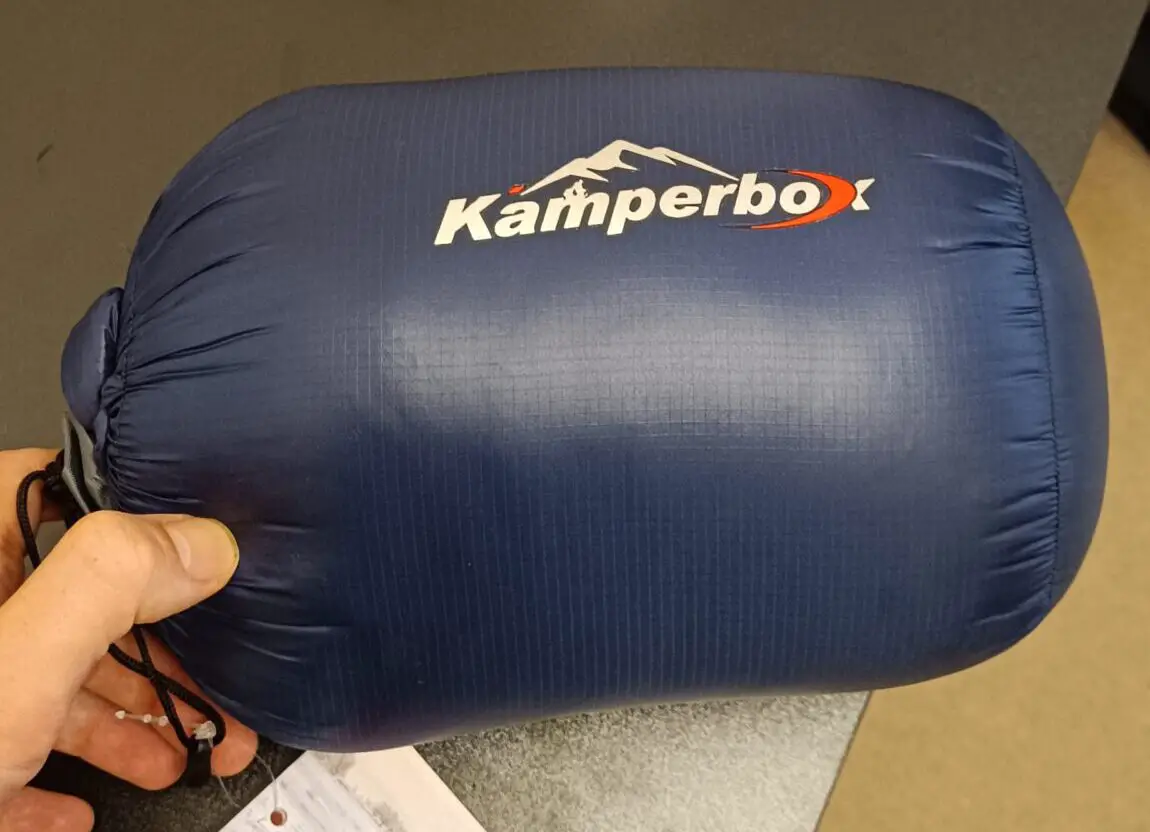You’ve probably come across the term “210T polyester” while shopping for tents or outdoor gear. But have you ever wondered what its waterproof rating is? As someone who’s spent years working with and testing various fabrics in the outdoor industry, I’m here to shed light on this subject.
The waterproof rating of 210T polyester primarily depends on its surface treatment. Treated with waterproof coatings like silicone or PU, it can reach a rating of around 3000mm. Without such treatments, its water resistance is significantly less.
In this post, I’ll dive into the nitty-gritty of what this rating means, discuss other coatings used, and share some personal insights on the topic.
Understanding the Waterproof Rating System
When we talk about the waterproof rating, we’re referring to how much water pressure a fabric can withstand before water begins to seep through.
The rating is often given in millimeters (mm). For example, a 3000mm rating means the fabric can handle 3000mm of water column pressure before leakage occurs. The higher the rating, the more waterproof the fabric.
From my personal experience, 210T polyester with a 3000mm rating can handle moderate rain without any issue. However, for torrential downpours or extended periods of rain, you might want to look for something with a higher rating or ensure that your tent has adequate rain protection in other areas, such as the seams and zippers.
Coatings and Treatments
While 210T polyester in its raw form might have some inherent water resistance, it’s the coatings and treatments that boost its waterproof capabilities. Here are some commonly used ones:
- Silicone: This is a favorite in the tent world. It offers excellent water resistance and durability. Many premium tents will have a silicone-coated outer layer to ensure long-lasting water protection.
- PU (Polyurethane): Another popular choice, PU coatings are versatile and can offer varying degrees of water resistance depending on the treatment level. From my testing, a PU-coated 210T polyester tent fares well in most weather conditions.
- Teflon: While not as common as silicone or PU, Teflon is sometimes used to increase the water repellency of fabrics. It doesn’t necessarily boost the waterproof rating as much as the other treatments, but it does help in shedding water off the fabric.
What does “D” and “T” mean in relation to waterproofing?
When discussing fabrics, especially in the context of tents and outdoor gear, terms like Denier, Tex, and thread count often come up.
Understanding these terms can help in making an informed decision about the durability and performance of a fabric.
Let’s break down what each of these terms means and their relevance to polyester density and waterproof ratings.
1. Denier (D)
Denier refers to the weight of a yarn or fiber. Specifically, it measures the linear mass density of fibers and represents the weight in grams of 9,000 meters of the fiber or yarn.
For instance, a 210D polyester fabric means that 9,000 meters of the polyester yarn weighs 210 grams.
Relation to Polyester Density and Waterproof Ratings:
- Higher Denier usually indicates a denser and thicker fabric, leading to more robust and durable material. However, it may also mean the fabric is heavier.
- While a higher Denier can suggest better wear resistance, it doesn’t directly correlate to higher waterproofing. Waterproof capabilities come from treatments and coatings on the fabric, but a denser fabric (higher Denier) can provide a better base for these treatments.
2. Tex
Tex is another way to measure the weight of yarns and fibers, similar to Denier. It represents the weight in grams of 1,000 meters of the fiber or yarn.
For instance, if a yarn has a Tex of 20, it means 1,000 meters of that yarn weighs 20 grams.
Relation to Polyester Density and Waterproof Ratings:
- A higher Tex number indicates a heavier, thicker yarn and typically suggests a denser fabric.
- Similar to Denier, while Tex provides an indication about the fabric’s potential durability and strength, waterproofing depends more on treatments and coatings than on the Tex number alone.
3. Thread Count
Thread count is a measure of the number of threads woven together in a square inch of fabric. It’s often used in the context of bed sheets, but it can also apply to other woven materials. Typically, you’ll hear terms like “300 thread count” or “600 thread count.”
Relation to Polyester Density and Waterproof Ratings:
- A higher thread count usually indicates a denser, smoother, and softer fabric. This is because more threads in a square inch mean the threads are packed more closely together.
- In terms of waterproofing, a higher thread count can mean fewer gaps between threads, potentially leading to better water resistance. However, the primary factor in waterproofing is still the treatments and coatings applied to the fabric.
Denier, Tex, and thread count all offer insight into the density and potential durability and water resistance of a fabric.
While they provide information about the structure of the fabric, the fabric’s waterproofing capabilities get better with thickness, waterproofing primarily come from specific treatments like PU, silicone, or other coatings.
When evaluating a fabric (like polyester) for outdoor use, it’s crucial to consider both its structural characteristics (e.g., Denier or Tex) and the treatments it has undergone.
How Does 210T Polyester Compare To Other Tent Fabrics?
Certainly! When choosing tents, the material plays a crucial role in determining durability, weight, and waterproofing capabilities.
| Fabric Material | Short Description | Waterproof Rating (Approximate) |
|---|---|---|
| 210T Polyester | Durable, UV-resistant, common in budget to mid-range tents. | 3000mm (when treated) |
| 20D Nylon | Lightweight, ideal for backpacking; less dense than 210T polyester. | 3000-5000mm (when treated) |
| 15D Nylon | Ultralight, less dense than 20D nylon, requires careful handling. | 2000mm (when treated) |
| Dyneema/Cuben Fiber | Premium ultralight material with a high strength-to-weight ratio, UV resistant, and doesn’t sag. | 5000mm+ |
| 40D Nylon | Heavier than 20D and 15D, offers greater durability and abrasion resistance. | 3000-5000mm (when treated) |
| 70D Nylon | Used in many ground cloths and tent floors due to its high durability; heavier. | 5000-10,000mm (when treated) |
| PolyCotton (65% polyester, 35% cotton) | Breathable, good for hot climates, expands when wet to seal itself. | 1000-2000mm (can vary based on treatments) |
| Ripstop Nylon | Nylon woven with a reinforced pattern to prevent tears and rips from expanding. | 3000-5000mm (when treated) |
| Canvas (Cotton) | Traditional, breathable, heavy, great for extended camping in one location. | 350-600mm (needs to be seasoned, can be treated for higher ratings) |
| SilPoly (Silicone Polyester) | Lightweight, less sag in wet conditions compared to SilNylon, UV-resistant. | 2000-4000mm |
Let’s compare 210T polyester with other popular tent materials: 20D nylon, 15D nylon, and Dyneema/Cuben fiber.
210T Polyester is a common fabric used in many budget to mid-range tents due to its balance of durability and cost.
- Density & Durability: The ‘T’ in 210T refers to threads per inch, indicating a fairly dense weave. Polyester is known for its resistance to UV degradation, which can be especially valuable in sunny environments.
- Waterproof Ratings: While the base material itself has some water resistance, 210T polyester is typically coated with silicone or PU to enhance its waterproofing. With treatments, it can achieve waterproof ratings around 3000mm.
1. 20D Nylon
20D Nylon is lighter and generally found in higher-end, lightweight tents.
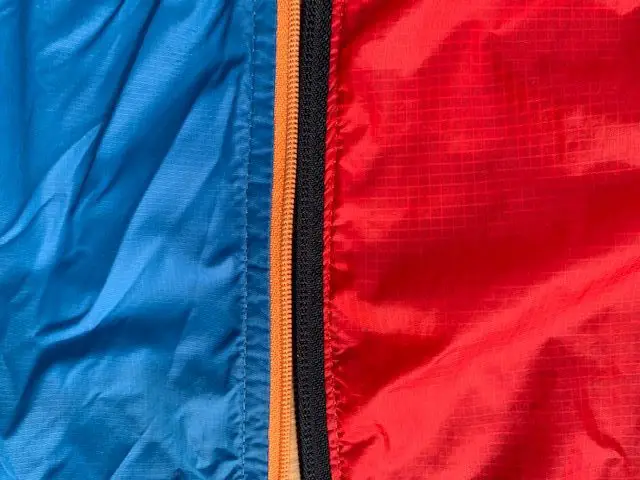
- Density & Durability: The ‘D’ stands for Denier, representing the weight of the yarn. 20D means it’s lighter and less dense than 210T polyester. It’s generally more fragile but is excellent for weight-conscious activities like backpacking.
- Waterproof Ratings: Nylon can absorb more moisture than polyester, which might make it sag in wet conditions. However, with silicone or PU coatings, its waterproof rating can be comparable to coated polyester, reaching around 3000mm or higher depending on the treatment.
2. 15D Nylon
15D Nylon is even lighter than 20D nylon, often used for ultralight tents.
- Density & Durability: Being 15D, it’s less dense and can be more prone to punctures or tears than the 20D variant. However, for those counting every ounce in their backpack, it’s an attractive option.
- Waterproof Ratings: Like 20D nylon, it needs coatings to achieve a significant waterproof rating. When properly treated, it can have a good waterproof performance, but care must be taken not to abrade or puncture the material.
3. Dyneema/Cuben Fiber
Dyneema (previously also known as Cuben Fiber) is a high-tech material touted for its exceptional strength-to-weight ratio.
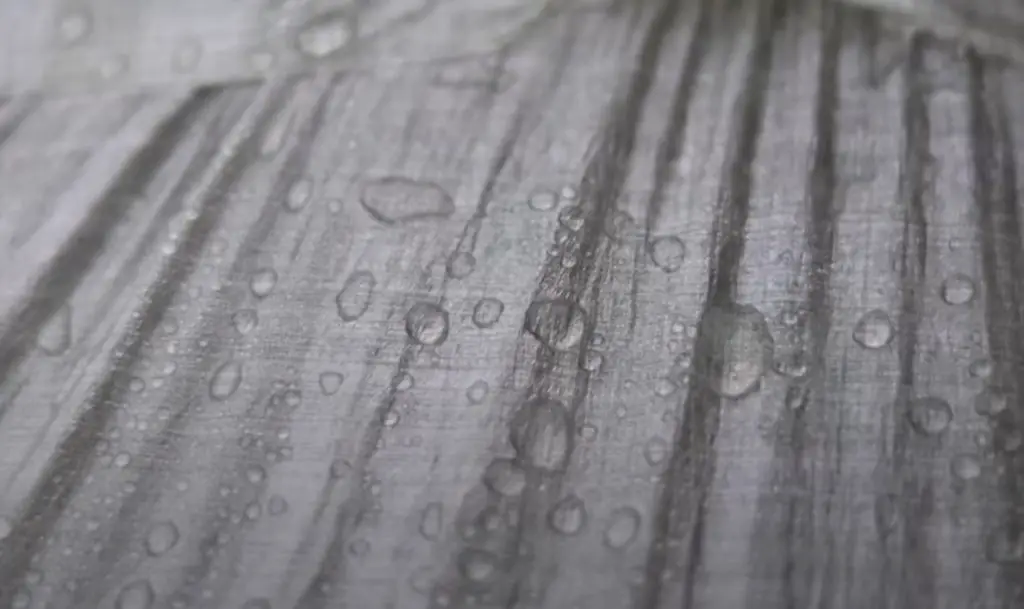
It’s commonly found in premium ultralight tents.
- Density & Durability: Dyneema is incredibly strong, often considered 15 times stronger than steel by weight. It’s resistant to UV light and doesn’t absorb water, preventing sagging in wet conditions.
- Waterproof Ratings: Dyneema is inherently waterproof, meaning you don’t need additional coatings for water resistance. Tents made of Dyneema can have waterproof ratings that exceed traditional coated fabrics, often reaching 5000mm or higher.
Each material has its strengths and weaknesses. While 210T polyester is durable and affordable, the nylon variants (20D and 15D) offer weight savings at the potential expense of reduced durability.
Dyneema stands out for its strength and lightweight characteristics but often comes with a higher price tag.
When selecting a tent, it’s essential to weigh factors like expected weather conditions, the importance of weight savings, durability needs, and budget constraints.
Other Considerations for Tents
Even with a high waterproof rating, it’s essential to remember that a tent’s overall performance in wet conditions will also depend on other factors. Ventilation, for instance, is crucial.
I’ve been in tents that boasted a high waterproof rating but had poor ventilation, leading to condensation buildup inside.
Seam sealing and zipper protection are also paramount. Over the years, I’ve seen many tents fail not because the fabric wasn’t waterproof enough, but because the seams leaked or the zippers allowed water to enter.
Over the years, I’ve camped in a range of conditions – from drizzles to torrential downpours. My personal favorite has always been tents with 210T polyester treated with a combination of silicone and PU. They offer a good balance between water protection, weight, and durability.
However, my key takeaway is that no matter the waterproof rating, always set up your tent properly and invest in a good footprint. It makes all the difference!
Conclusion
To wrap it up, the waterproof rating of 210T polyester largely hinges on the treatments it receives. With coatings like silicone or PU, you’re looking at a solid 3000mm rating. Without such treatments, expect significantly less protection.
Here are the key takeaways:
- 210T polyester’s waterproof rating depends on surface treatment.
- Treated with silicone or PU, it has a 3000mm rating.
- The rating refers to water column pressure before leakage.
- Silicone and PU are popular treatments for tents.
- Teflon increases water repellency but not necessarily the rating.
- Ventilation, seam sealing, and zippers also affect tent performance.
- 210T polyester tents are versatile and effective for most campers.
- A combination of silicone and PU treatments often yields the best results.
- Always set up your tent properly for optimal performance.
- Invest in a good footprint to enhance water protection.
Lastly, while I can provide technical insights and personal experiences, I urge you always to consider your specific needs and do your own testing. Every camper and every situation is unique. Happy camping!
FAQs
1. Can the coatings on tent materials wear off over time?
Yes, coatings like silicone and PU on tent materials can degrade over time. Factors like exposure to UV light, general wear and tear, and improper storage (e.g., storing a tent while it’s still wet) can diminish their effectiveness. It’s essential to care for and periodically check your tent to ensure it maintains its waterproof integrity.
2. Why do some tents have a mesh inner layer?
Many tents feature a mesh inner layer to improve ventilation and reduce condensation inside the tent. Mesh allows for better airflow, helping to keep the tent cooler in hot conditions and reduce moisture buildup inside. This design also offers an advantage in bug-infested areas by acting as a barrier against mosquitoes and other insects.
3. How do I increase the lifespan of my tent’s waterproofing?
To maintain and possibly extend the lifespan of your tent’s waterproofing:
- Clean your tent gently after every trip.
- Avoid prolonged exposure to UV light.
- Store it in a cool, dry place.
- Avoid folding the tent in the same way every time, which can create wear points.
- Consider using a footprint to protect the tent floor and occasionally applying a waterproofing spray or seam sealer, especially if you notice the waterproofing degrading.
4. How do I know if my tent’s waterproof rating is sufficient for my camping conditions?
While a higher rating generally indicates better water resistance, consider the expected weather conditions. For sporadic showers, a rating of 1500mm-2000mm is often sufficient. For more prolonged and heavy rainfall, you might want a tent with a rating of 3000mm or higher. However, always bear in mind that tent design, such as the quality of seams and zippers, also plays a significant role in keeping you dry.
5. Are there any eco-friendly alternatives or treatments for tents?
Yes, in recent years, there’s been a push towards more sustainable outdoor gear. Some brands now offer tents made from recycled materials or utilize PFC-free waterproofing treatments, which are better for the environment. When shopping, look for brands that highlight their eco-friendly practices or materials.

